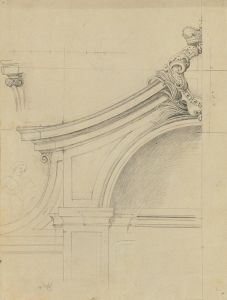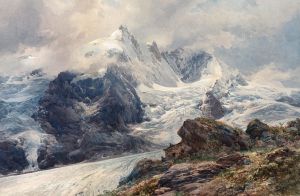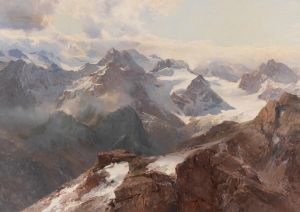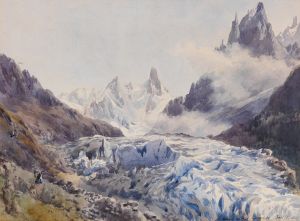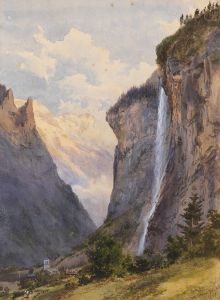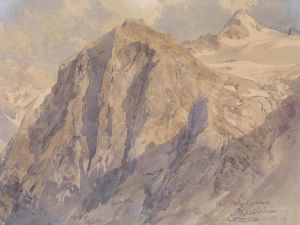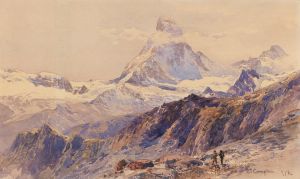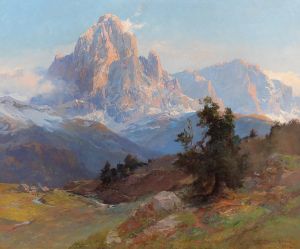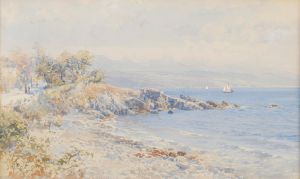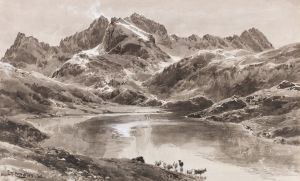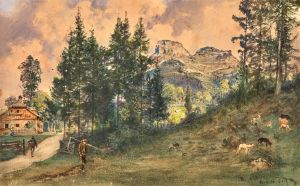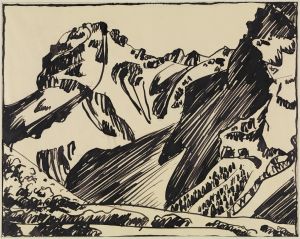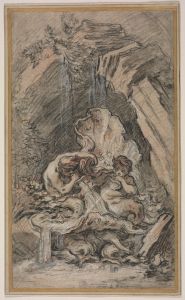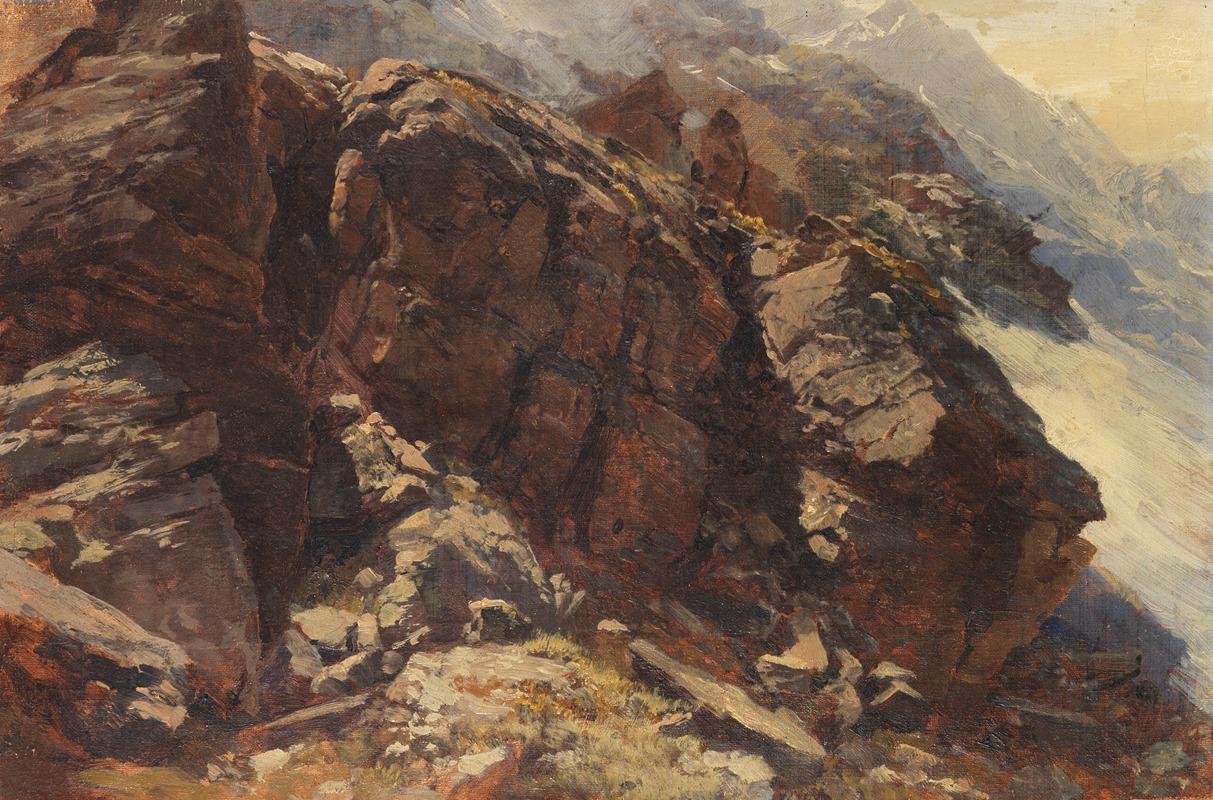
Hochgebirgsstudie
A hand-painted replica of Edward Theodore Compton’s masterpiece Hochgebirgsstudie, meticulously crafted by professional artists to capture the true essence of the original. Each piece is created with museum-quality canvas and rare mineral pigments, carefully painted by experienced artists with delicate brushstrokes and rich, layered colors to perfectly recreate the texture of the original artwork. Unlike machine-printed reproductions, this hand-painted version brings the painting to life, infused with the artist’s emotions and skill in every stroke. Whether for personal collection or home decoration, it instantly elevates the artistic atmosphere of any space.
Edward Theodore Compton, an English-born artist and mountaineer, is renowned for his detailed and evocative paintings of alpine landscapes. One of his notable works is "Hochgebirgsstudie," which translates to "High Mountain Study." Compton was born on July 29, 1849, in Stoke Newington, London, and later moved to Germany, where he spent much of his life and career.
Compton's fascination with mountains began at an early age, and he combined his passion for mountaineering with his artistic talents. He became a member of the Alpine Club in London and the German and Austrian Alpine Club, which allowed him to explore and document the rugged beauty of the Alps and other mountain ranges through his art.
"Hochgebirgsstudie" exemplifies Compton's ability to capture the majesty and grandeur of high mountain landscapes. His works are characterized by meticulous attention to detail, vibrant use of color, and a deep understanding of the geological and atmospheric conditions of the high mountains. Compton's paintings often feature dramatic compositions, with towering peaks, expansive glaciers, and dynamic weather conditions, all rendered with a sense of realism and awe.
Compton's artistic style was influenced by the Romantic movement, which emphasized the sublime beauty of nature and the emotional response it evokes. His works often convey a sense of awe and reverence for the natural world, reflecting his own experiences as a mountaineer. Compton's ability to depict the intricate details of rock formations, snow, and ice, as well as the play of light and shadow, sets his work apart from other landscape artists of his time.
Throughout his career, Compton produced numerous paintings, sketches, and illustrations of alpine scenes, many of which were published in books and journals dedicated to mountaineering and natural history. His works were highly regarded by his contemporaries and continue to be appreciated by art enthusiasts and collectors today.
Edward Theodore Compton passed away on March 22, 1921, in Feldafing, Bavaria, Germany. His legacy as an artist and mountaineer endures, with his paintings serving as a testament to his skill and passion for capturing the beauty of the high mountains. "Hochgebirgsstudie" remains a significant example of his work, showcasing his ability to blend artistic talent with a deep appreciation for the natural world.





